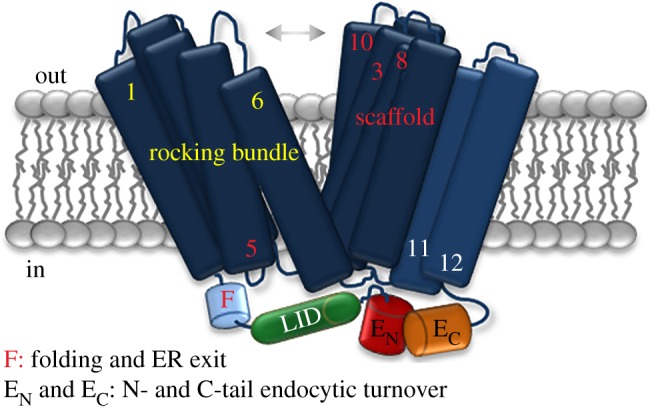Figure 4.

The multiple roles of both termini of FurE in folding, ER exit, endocytosis and substrate specificity. The figure is based mostly on data concerning the FurE transporter, which contains a LeuT-like fold. Details are described in the text and in [17]. LID stands for the central part of the N-tail that is specifically involved in interactions with several other cytosolic internal loops and thus allosterically regulates the functioning of the outer and inner gates and substrate specificity. EN and EC are the distal parts of the tails that interact dynamically with each other during transport, and thus recruit ubiquitination and endocytosis factors, but also the positioning of the LID, which, in turn, affects the function and specificity of the transporter. F is the part very proximal to TMS1 that is critical for the correct folding of TMS1 and of the transporter, and thus affects packaging to COPII vesicles and ER exit.
